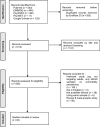The prevalence of psychiatric comorbidities in adult ADHD compared with non-ADHD populations: A systematic literature review
- PMID: 36331985
- PMCID: PMC9635752
- DOI: 10.1371/journal.pone.0277175
The prevalence of psychiatric comorbidities in adult ADHD compared with non-ADHD populations: A systematic literature review
Abstract
Comorbid psychiatric disorders in adults with ADHD are important because these comorbidities might complicate the diagnosis of ADHD and also worsen the prognosis. However, the prevalence of comorbid psychiatric disorders in adult ADHD varies according to the diagnostic tools used and the characteristics of target populations. The purpose of this review was to describe the prevalence of comorbid psychiatric disorders in adults with ADHD compared with adults without ADHD. Thirty-two studies published before August 2022 were identified and classified according to diagnosis of other psychiatric disorder in those with ADHD. The most frequent comorbid psychiatric disorder in the ADHD group was substance use disorder (SUD), followed by mood disorders, anxiety disorders, and personality disorders. The prevalence of these four disorders was higher in the ADHD group, whether or not subjects were diagnosed with other psychiatric disorders. In addition, the diversity of ADHD diagnostic tools was observed. This also might have affected the variability in prevalence of comorbidities. Standardization of ADHD diagnostic tools is necessary in the future.
Copyright: © 2022 Choi et al. This is an open access article distributed under the terms of the Creative Commons Attribution License, which permits unrestricted use, distribution, and reproduction in any medium, provided the original author and source are credited.
Conflict of interest statement
The authors have declared that no competing interests exist.
Figures
References
-
- American Psychiatric Association. Diagnostic and Statistical Manual of Mental Disorders. 5th ed. 2013.


